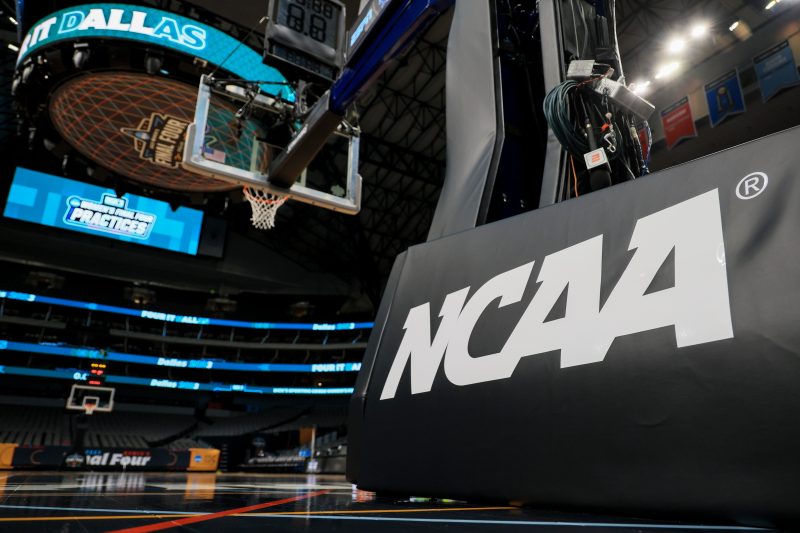Lawyers involved in the proposed settlement of three athlete-compensation antitrust cases against the NCAA and the Power Five conferences said in filings on May 7 that they have addressed the concern a federal judge had said was preventing her from granting final approval.
The issue involves roster limits that had been set to go into effect immediately as part of the agreement. On April 23, U.S. District Judge Claudia Wilken said that the immediate implementation of sport-by-sport roster limits made the proposed settlement “not fair” because thousands of athletes who are supposed to be benefiting from the deal stood to lose their places on teams after the current school year.
Wilken gave the sides two weeks to address her concerns, and in a new filing, the plaintiffs’ lawyers wrote that they and the NCAA have agreed to an arrangement under which: “any athlete who would have lost their roster spot (or a promised roster spot) for the 2025-2026 academic year due to the immediate implementation of roster limits will be exempt from any roster limits at any Division I institution, for the duration of their college athletics careers.”
This does not remove the roster limits from the settlement. And this would not require schools to keep all of their current athletes on their rosters. However, it would give schools the option to keep any athlete who was on a roster in 2024-25 and who has been or would have been removed for 2025-26 because of the limits. It also lets schools accommodate any high school senior who was ‘recruited to be, or was assured they would be’ on a Division I school’s roster for the 2025-26 school year.
Lawyers for the NCAA wrote that ‘there are no guarantees’ that these athletes ‘will get or maintain roster spots. But that does not adversely affect any’ athlete, the NCAA said, because athletes’ roster spots always have been ‘at the discretion of the coach’ and the school.
However, Steve Molo, a lawyer for a group of objectors, said in a statement on the night of May 7 that the ‘proposed mushy modification doesn’t go far enough. Many, many student athletes have had something taken away from them. The fight will continue.”
Laura Reathaford, another lawyer for an objector, told USA TODAY Sports she will be filing a separate brief.
In apparent anticipation of this, lawyers for the NCAA wrote: ‘To the extent the Objectors want more, e.g., guaranteed roster spots or years of delay in imposing roster limits, Defendants respectfully submit they are overreaching’ and they provided a series of arguments defending the new proposal. Some were based on legal reasoning connnected to the antitrust standard that a settlement must be fair, reasonable and adequate. Others were based athletic department operational issues.
In her order two weeks ago, Wilken asked that Reathaford, Molo and another lawyer for objectors be included in discussions about revisions to the roster limits that also were included a mediator and lawyers for the plaintiffs, the NCAA and the Power Five conferences.
On the night of May 7, Wilken said in an order that each of these three lawyers can file responses by May 13, and that the plaintiffs and the NCAA and conferences can file replies by May 16.
In that order, Wilken also wrote that she was inclined to approve the rest of the deal over a variety of other objections. That means she already was otherwise prepared to accept an arrangement under which $2.8 billion in damages would be paid to current and former athletes — and their lawyers — over 10 years, and Division I schools would be able to start paying athletes directly for use of their name, image and likeness (NIL), subject to a per-school cap that would increase over time and be based on a percentage of certain athletics revenues.
For any school that would be making direct NIL payments to athletes, the roster limits were to take effect on July 1 alongside an end to the NCAA’s existing system of sport-by-sport scholarship limits for any such school. However, during a final-approval hearing on April 7, Wilken asked for several smaller changes to the proposed settlement and strongly suggested a system of phased-in implementation of the roster limits after a number of lawyers and scores of athletes and parents — some in emotional and personal written pleas — had asked her to consider such a solution.
On April 14, the principals submitted a revised version of the deal that did not include changes to the roster limits. Wilken refused to approve it, though she gave them another chance while also setting a case-scheduling order that would begin to move the case toward a trial date that was left unspecified.
Lawyers for the NCAA wrote that the new approach to roster limits “restores the pre-settlement status quo for (the affected athletes) so that they will not lose roster spots ‘because of’ the roster limits. That eliminates, beyond any doubt, any remaining question as to whether the settlement is fair and reasonable’ for athletes ‘as a whole.”
To make this operational, the lawyers for the plaintiffs wrote, within 30 days of final approval, schools would be “required to use good-faith efforts” to identify athletes who would have lost roster spots in 2025-26 because of the limits – those who are being called “Designated Student-Athletes.” And the plaintiffs’ lawyers will have the right to note additional athletes “who should have been identified” in that manner.
The plaintiffs’ lawyers also wrote that any athlete who ‘transferred or is scheduled to transfer because they were told that they would be removed from a roster in 2025-2026 due to the implementation of roster limits, nothing in the NCAA rules … will restrict schools from allowing that athlete to transfer back to — or rescind their decision to transfer from — their original school.’
